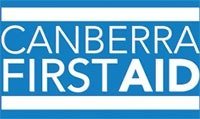- Cooling burns with water for 20 min lowers ICU admission likelihood by 48 per cent
- Cool the burn for more than 40 can be detrimental and cause hypothermia
- Cooling first aid limits energy flow in the affected region and reduces cell damage
RUNNING cool water over an acute burn for 20 minutes within the first three hours of injury is still the best method for first aid prior to hospital admission, a West Australian-based study has found.
The research highlights the significant effect pre-hospital first aid has on a burns patient’s need for surgical intervention, length of stay and Intensive Care Unit admission.
The cohort study, led by UWA and Fiona Stanley hospital specialists, took into account 2320 cases of burns recorded through the Burn Registry of Australia and New Zealand (BRANZ) between 2009 and 2012.
They found 68 per cent of patients cooled their injury before they were admitted to a burns centre, with 46 per cent of respondents using the method for at least 20 minutes.
When burns sufferers applied cool water for 20 minutes, the probability of them requiring graft surgery dropped by 13 per cent, while the same treatment resulted in a 48 per cent reduction in people needing ICU admission.
Water cooling also reduced average hospital stays by more than two days.
However, the data found cooling for more than 40 minutes did not have a significantly positive effect on the burns sufferer.
In fact, it proved to be detrimental, likely causing negative effects such as hypothermia.
Treating burns
“Last year around 650 people in WA needed in-hospital care for burns, while a whole lot more happened in the community,” lead author and prominent burns specialist Fiona Wood says.
“Over 50 per cent of the cases presenting to hospital have had some first aid.”
Dr Wood says no matter the severity, burns first aid treatment should start by cooling the burn and keeping the patient warm.
“Stay safe, remove the person from the problem, cool the burn area, warm and comfort the patient,” Dr Wood says.
“Cooling reduces the energy in the area so limiting the ongoing damage to the cells in the skin.
“We need to spread the word that [exposing the burn to] clean cool running water for 20 minutes can reduce the scar worn for life.”
Learn more about first aid and burns in one of our cheap first aid courses in Canberra. We run courses every week at the Dickson Tradies and make sure that you have all the basic training techniques in first aid.
